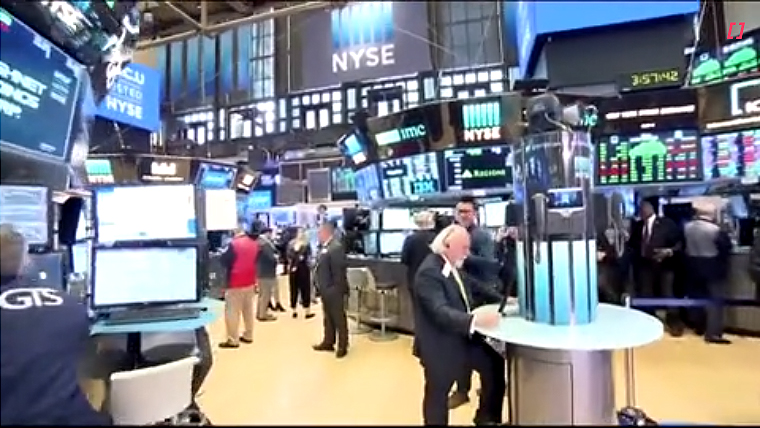
Stronger than expected US retail sales and jobless claims data helped dispel concerns the economy was entering a deeper slowdown and sent equities, treasury yields and the US dollar higher. The S&P gained 1.5%, extending its weekly advance to almost 4%. There were solid gains in European equities as well with the Euro Stoxx closing 1.7% higher on the day.
Headline US retail sales increased 1% in July, the largest increase in more than a year and well above expectations for a 0.4% gain. Core retail sales, which exclude autos and gas rose 0.4% which was also stronger than expected and points towards resilience in US consumers. The retail control group, a proxy for underlying consumer spending and a better measure of the underlying trend, rose by 0.3% casting doubt on the notion that a recession is imminent.
US initial jobless claims decreased to 227K, which was below consensus estimates, and the lowest level since early July. The report reduced concerns about the extent the labour market is cooling following the weaker than expected July payrolls data. Separately, industrial production fell by 0.6% in July, and the underlying trend remains flat, suggesting further stagnation ahead.
US treasury yields moved sharply higher led the front end of the yield curve. 2-year yields spiked 15bps to 4.10% immediately following the data as investors reduced expectations for aggressive easing by the Fed. The market is pricing ~32bps of easing at the September FOMC, as the probability for a 50bps cut continues to be pared, although the August labour market report is likely to be a key input into the magnitude of any easing. 10-year yields increased 10bps to 3.93% with the curve maintaining its flattening bias from previous sessions.
Key monthly indicators continued to point to sluggish activity in the Chinese economy with weak domestic demand amid a prolonged downturn in the housing market. Fixed asset investment unexpectedly slowed to 3.6% for the first seven months of the year. Industrial production rose at a 5.1% annual rate in July, down from 5.3% the previous month. Retail sales increased 2.7% which was slightly stronger than consensus estimates.
The absence of a meaningful economic recovery is likely to see calls for additional policy stimulus to support activity. China’s central bank Governor has pledged to take further steps to support the economic recovery but cautioned it won’t be taking drastic measures.
The US dollar moved sharply higher aligned with US treasury yields. The dollar index advanced close to 0.5% with the dollar making its largest gains against the yen and Swiss franc. Growth sensitive commodity currencies - NZD, AUD & CAD - outperformed amongst G10 currencies. Notwithstanding the volatile period around the US data, NZD/USD is only modestly weaker in offshore trade. NZD/AUD remains lower, testing 0.9050 overnight, after the fall yesterday following stronger than expected July employment figures in Australia.
The relentless rally in NZ fixed income continued in the local session yesterday. 2-year swap rates fell a further 13bps to 3.76%, with soft inflation partials for July supporting the move lower in yield. The front end outperformed and the 2y/10y swaps curve steepened to +10bps. Government bonds underperformed relative to swaps with 10-year asset swap spreads widening back to +30bps.
The weekly government bond tender attracted reasonable investor demand. There were NZ$1.3 billion of bids for the NZ$500 million of bonds offered. However, the cover ratio for May-2034 was relatively soft, as the market looking ahead to the syndication of the new May-2036 nominal bond, which is likely to be launched early next week after the syndicate banks were announced today.
Australian 10-year bond futures are ~8bps higher from the local close yesterday, suggesting an upward directional bias for NZGB yields on the open.
The manufacturing PMI is released today for July. In June, the index fell to a record low of 41.1 when the pandemic volatility is excluded. UK retail sales should pick up from the weather impacted June reading. Later this evening, US consumer sentiment and inflation expectations data is released.
Daily exchange rates
Select chart tabs
6 Comments
HFL is here to stay!!
That is OCR/FED funds higher than restrictive - over 3.5%.
FED funds rate HFL playing out could easily cause serious downside for our currency. Could simmering Inflation be regarded as the ongoing "pestilence" that proves harder to eliminate than first thought?
This could well limit how hard and fast Orr cuts
The correlation between the OCR and the NZD is vastly overstated. The overall progress of the NZ economy (or lack thereof) is a far better correlation and the causation is clearer. In this regard, the OCR is but a lagging indicator.
Just watch the FED cut rates. The USA is now so obsessed with trying to beat China that you are never going to get any bad data out of the USA.
China economy and demand is just sooooo bad, they are now not reporting on it.
Their steel industry may need to idle or completely shut down plants.......overproduction, overspeculation and overbuild on roids.
To many "overs" on one side, sinks the boat.
China looks set for the same leadup case, as was setup in the West, before the Great Depression......or perhaps start another war?





We welcome your comments below. If you are not already registered, please register to comment.
Remember we welcome robust, respectful and insightful debate. We don't welcome abusive or defamatory comments and will de-register those repeatedly making such comments. Our current comment policy is here.